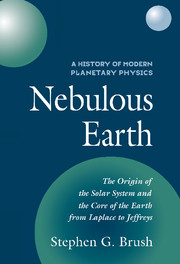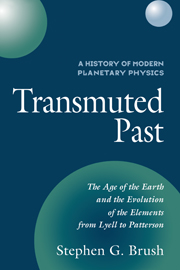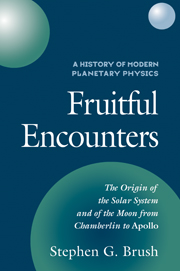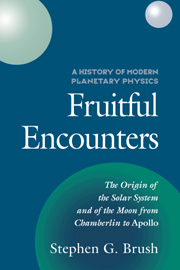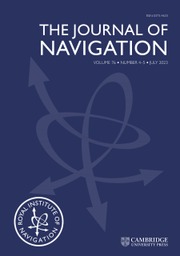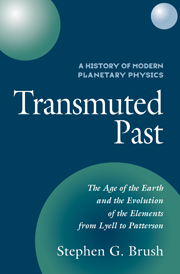A History of Modern Planetary Physics
Where did we come from? Before there was life there had to be something to live on - a planet, a solar system. During the past 200 years, astronomers and geologists have developed and tested several different theories about the origin of the solar system and the nature of the Earth. Did the Earth and other planets form as a by-product of a natural process that formed the Sun? Did the solar system come into being as the result of catastrophic encounter of two stars? Is the inside of the Earth solid, liquid or gaseous? The three volumes that make up A History of Modern Planetary Physics present a survey of these theories. Nebulous Earth follows the development of the nineteenth-century's most popular explanation for the origin of the solar system, Laplace's Nebular Hypothesis. This theory supposes that a flattened mass of gas extending beyond Neptune's orbit cooled and shrank, throwing off in the process successive rings that in time coalesced to form several planets.
Product details
July 1996Hardback
9780521441711
326 pages
234 × 156 × 19 mm
0.63kg
11 b/w illus.
Available
Table of Contents
- Preface
- Part I. Nebular Birth and Heat Death:
- 1. Introduction
- 2. The Founders: Laplace and Herschel
- 3. Followers and critics
- 4. The Nebular Hypothesis and the evolutionary worldview
- 5. Thermodynamics and the cooling Earth
- 6. Saturn's rings (with C. W. F. Everitt and Elizabeth Garber)
- 7. Revisions of the Nebular Hypothesis, 1860–85
- 8. Poincare and cosmic evolution
- 9. The Nebular Hypothesis in the 20th century
- Part II. Inside the Earth:
- 1. A journey to the center of the Earth
- 2. Nineteenth-century debates: Solid, liquid or gas?
- 3. Discovery of the Earth's core
- 4. Chemical history of the core
- 5. Geomagnetic secular variation (with S. K. Banerjee)
- 6. Time and tide
- Index.

